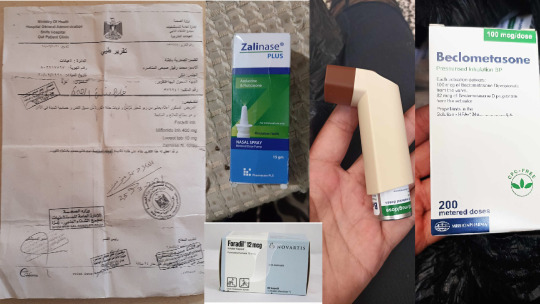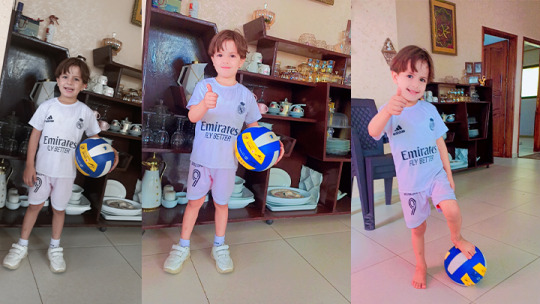#children asthma
Explore tagged Tumblr posts
Text
Natural Foods and Remedies to Support Asthma Relief in Children
Managing asthma, especially in children, often includes prescribed medication, but certain foods and natural remedies can help to support respiratory health, reduce inflammation, and improve overall immune function. Incorporating asthma-friendly foods and practices can be a gentle, beneficial addition to their daily care routine. 1. Anti-Inflammatory Foods Asthma involves inflammation of the…
0 notes
Note
fucker, poot heavy, and fucked like this

LMFAOOO SORRY THIS IS JUST A MS PAINT DOODLE BUT I NEEDED TO DRAW THIS AS FAST AS POSSIBLE AJSHGJDGAJGSDA

IT'S LITERALLY THEM AHSDGAJDKAJDAD You're so smart pookiemedes heeheee

#ask#asks#deltas frens#deltas consulting room#deltas men obssesion#deltas children#deltas random pencil grabbin#deltas mercy on the poor#tf2#tf2 heavy#tf2 heavy oc#tf2 medic oc#heavymedic#tf2 medic#ms paint doodles#I love the heavy asthma headcanon btw
40 notes
·
View notes
Text
*
I tested positive for covid this week. My symptoms are SO DIFFERENT from last time (no fever, no aches, no cough) that I thought it was just a run-of-the-mill head cold until my family group chat informed me otherwise and I tested myself and yup, covid with a capital C, friends.
I've spent the last few days resting well, staying hydrated, reminding myself to eat, etc but today I was feeling a bit better and decide I would do laundry because I needed to and wow, going up and down the flights of stairs to the laundry room did me in. I'm so tired now.
Stay safe out there, friends. It's no joke.
#also a lot of my friends with small children are dealing with rsv and asthma from all the wildfire smoke too#my cousin's preschooler had croup a few weeks ago which was so bad they had to call the paramedics bc he wasn't breathing#january 2025 is really kicking us in the gnads i'm not going to lie
13 notes
·
View notes
Text
every day i have to explain to older dutch ppl that no i do not work with children i actually make silly little films with puppets
#pp#WHO decided that we call organising childrens activities animatie????? i just want to talk#went to the asthma doctor today n she was really sweet but im continually humbled by the fact that ah. ppl legit dont know what animation is
9 notes
·
View notes
Text
Hey y'all, if you could share this I would appreciate it. My friend Vannah's cat, Butch, is in rough shape. He has asthma and one of his lungs is partially collapsed, and he needs a lot of medication and more diagnostic procedures. Vannah's posted x-rays, invoices, and Butch's treatment plan on the gofundme itself if you need verification. Butch is a sweet boy and Vannah loves him dearly, it'd mean the world if y'all could share this and help out.
#strato.txt#vannah's my childhood bestie we've known each other for like 20 years nearly. she treats her cats like her children#like really spoils the hell out of them#butch was her second cat adopted and he's such a darling. he was diagnosed w asthma around the same time i was :(#vannah doesnt use tumblr anymore really so thats why im posting for her
47 notes
·
View notes
Text
Finally got my TDaP booster today (it was 10 years in July but I've been sick off and on since then) and managed to arrive just in time to hear one of Appalachia's finest muttering about "poisons" in response to being asked about covid and flu shots.
#my PCP said I really only needed a TD since I don't spend a lot of time around kids#coincidentally TD is in CRAZY short supply because they stopped making TdVax this year#also coincidentally there's also been a bunch of pertussis outbreaks and everyone is my household has asthma so no thanks#stop b think of the children
5 notes
·
View notes
Text
greg otgw undead/great old one warlock. you see the vision
#LISTENNN. greg if wirt never found him#greg if he made a deal w the beast to let wirt leave the forest. greg if he was just a little boy who didn’t realize he was dead#half dead boy half tree. the beast is his patron. he’s coughing up leaves and wheezing bc there are branches growing inside him#but he always goes oh it’s just my asthma 😁👍#his deal w the beast is both to help keep the lantern lit and to bring more lost travelers to him. bc who wouldn’t follow greg#i just fuckinmg. loveeee when children in horror r fucked up and don’t realize it#i just love child ttrpg characters in general actually#also obsessed with him not fully understanding what’s going on and patiently waiting until he gets to see his#step brother again. just filling his days not realizing how many days it has been. how many years.#hes having a good time!!!! until he Isn’t
6 notes
·
View notes
Text
My campaign is verified and added to the Gaza Donations page with number 192.
Thank you for documenting my campaign from the following accounts:
@sar-soor @heba-20 @el-shab-hussein @90-ghost @soon-palestine@ibtisams @marnota @riding-with-the-wild-hunt @i-am-aprl @northgazaupdates @fallahifag @fairuzfan
I love you all 🙏🙏♥️🌹
I am Mohammed Almanasra, 32 years old, married, and a father of three children: Abdulrahman, 6 years old, Sarah, 4 years old, and Lina, 3 years old.

My story began with the loss of my parents and four of my sisters, who were bombed and lost their lives along with their children after the events of October 7 and the severe war on Gaza. Now, I am facing a severe injury to my leg, which is at risk of amputation if I do not receive the necessary treatment. My wife, children, and I are displaced, without parents or siblings, and my wife is also suffering from uterine cancer.

Recently, I moved to the south of the Gaza Strip, fearing for the lives of my children. We left behind our memories and our new home, for which we had not finished paying the installments, in addition to losing my job. Currently, I live in a tent that does not protect me from the heat of summer or the cold of winter, and without the minimum necessary livinng basics including water, food medical care, clothe and even bedding .

I suffer from a chronic asthma and severe attacks from tightness and an extreme allergy in the ear and I need medicine that are not available, or very expensive .


Under these difficult circumstances, after five attempts at displacement and narrowly escaping death from the bombing, I am trying with all my might to protect my family, the most precious thing I have.
My dreams were shattered, and my house was destroyed, and I found myself living in a tent no larger than 4 square metres. My work turned from a tailor to a street vendor in order to barely buy a few crumbs of bread to feed my children.

Look at what happened to my children because of the intense heat and the insects that thrive in the summer season. Every day, I take them to the hospital to treat them due to poisonous insect bites. I implore every kind-hearted soul to help me protect my children.
My son, Abdul Rahman, has a deep passion for playing football and is a devoted fan of Real Madrid. He always dreamed of playing football at his school, but the war prevented this dream from coming true.

Where are you, Real Madrid fans ?
Help Abdul Rahman achieve his dream.

Every donation will make an enormous difference in helping me save my family.
I feel very sad and embarrassed to ask for help, but I have no other options left. I know that this request is difficult, but I also know that there is still humanity and living consciences and I believe in miracles.
Your support during this extremely difficult time will give us hope in the midst of devastation and despair.
If you have any inquiries or questions, feel free to ask me, please!
To everyone with a compassionate heart,
To all who understand the essence of humanity,
This is a message from my innocent children, who trust that their words will reach everyone who truly understands the meaning of childhood.
We cry out to you, asking you to feel our sorrow and pain, and to extend a helping hand to us in this time when we are in desperate need of your mercy and compassion.
My name is being repeatedly added to many public and private donation campaigns. Please, be a support for me in this difficult situation.


https://docs.google.com/spreadsheets/u/0/d/1yYkNp5U3ANwILl2MknJi9G7ArY4uVTEEQ1CVfzR8Ioo/htmlview
Sincere greetings & thanks
Mohammed & the family
#gofundme#palestinian genocide#free gaza#gaza strip#gaza#i stand with palestine 🇵🇸#free palestine 🇵🇸#from the river to the sea palestine will be free#palestine#gaza under attack#aid for gaza#palestine aid#support palestine#my posts#paypal#palestine news#please#war on gaza#🥭#follow 👑 share ❤️ enjoy 🍑#🇵🇸#save 🍉#palestine 🍉#much love 🫶#📍 pinned post.#sorry 😔#gaza solidarity encampment#gaza gofundme#palestine gfm#free palestine
27K notes
·
View notes
Text
#pediatric hospital Bangalore#best neonatologist in Bangalore#best nicu hospitals in Bangalore#best pediatrician Bangalore#best paediatric doctors in Bangalore#best child specialist hospital in Bangalore#child specialist in Bangalore#child hospital in Bangalore#children's allergy and asthma clinic
0 notes
Text
@samiraaymaan A pregnant mother of four, facing malnutrition and asthma, has been displaced several times and is fighting to ensure the safety of herself and her children. Her campaign launched on June 22nd and has received minimal donations. Please support Samira and her family to help them survive and secure the funds necessary for evacuation as soon as the borders reopen.
DONATE HERE
Vetted by 90-ghost
11K notes
·
View notes
Text
Find Me Friday: Wally & Fletcher!
Logo that says Reece’s Rainbow Special Needs Adoption Support in blue, below a blue & yellow paint stroke rainbow graphic with a yellow Ukrainian trident symbol on the right half. In this series, each Friday I’m able, I want to share a different child or group of children who are available for adoption and listed through the adoption advocacy website Reece’s Rainbow. Please note, names used on…

View On WordPress
#accessible post#acid reflux#adoption advocacy#asthma#attention deficit hyperactivity disorder#autism#autistic#available for adoption#available to married couples#blind#developmental delay#disability adoption#Eastern Europe adoption#eczema#education#facial dysmorphia#fetal alcohol syndrome disorder#Find Me Friday#Fletcher#FSP#heart defect#medical history#medication#patent foramen ovale#photo descriptions#Reece&039;s Rainbow#vision impairment#waiting children#Wally
0 notes
Text

#Introducing JUSTKOF-A Syrup by Unibyte Kids#It Treats#- Cough#-Bronchitis#-Asthma#For More Info:#Visit unibytekids.com#Call+91-9816857058 | [email protected]#.#Children#Pediatrics#Pediatrician#kidshealth#qualityproducts#sachet#PCDPharmaFranchise#PCDPharma#monopolybased#franchise#business#sachetparampara#bacterialinfections#diarrhoearelief#toddlerlife
0 notes
Text
Got exposed to one of my top-tier asthma triggers at work yesterday and had a miserable night's sleep, even with my rescue inhaler and my routine inhaled steroid.
So guess who got to start her emergency steroids today, which were swapped for no obvious reason from Medrol (6 days, moderate side effects) to prednisone (12 days, I am going to eat my fucking dining room chairs if I'm not careful)?
I DO feel better now that it's been 12ish hours since my first dose but AUGH.
#if you're new here my asthma is considered “moderate” and I've never had anything like a true capital-e Emergency#nor gone to the ER for asthma nor had a nebulizer treatment ever#I didn't sleep well and I was not comfortable but it's better now#but for reference I use emergency steroids like once every OTHER year#stop b think of the children
7 notes
·
View notes
Text




more angels


divine transformation
#when i got asthma a few years ago they gave me a lung capacity measurement device for children and it came with stickers#boney spaloney
82 notes
·
View notes
Text
Can I Tell You About Asthma? By Lesley Mills

Meet Alfie - a young boy with asthma. Alfie invites readers to learn about asthma from his perspective, describing how it feels to have an asthma attack and what the common triggers are. He talks about the challenges of having asthma and how important it is that his friends and the people around him can recognise the signs when he starts feeling short of breath and know how to help. Alfie also gives simple instructions on using asthma inhalers and other medical treatments. This illustrated book is full of useful information and will be an ideal introduction for young people, aged 7 upwards, as well as parents, friends, teachers and nurses. It is also an excellent starting point for family and classroom discussions.
1 note
·
View note
Text
Had to reup my emergency inhaler today and I got to thinking about my history of Asthma. (Surprise, it's a life-long thing!) I don't really know when they first started giving me these little things, Probably since I was six or seven? (My recall is fuzzy on stuff like this.) But I had one for a few years before the doctors worried I didn't know how to use it properly. So they gave us a thing called a spacer. It was just a five inch clear tube with a mouth hole on one end and a little spot to insert the inhaler's aerosol end. The idea was to inhale slowly when I could see the medicine being sprayed. And to make sure I wasn't breathing it in too hard (Therefore negating it's medicinal purpose) the tube had a little plastic harmonica. If the harmonica sounded, I was sucking down the albuterol too fast. If you think for one moment my wheezing ass was going to skip out on the weird little thrill of hearing a harmonic sound as I huffed the ever-living hell out of that stupid tube, you are fucking wrong. I tried not to use the damn thing, knowing full well my little brain would not resist the siren temptation to make a thing make sound while I am actively coughing my lungs out like a fish on land. But my mother wanted me to use it because "I paid money for it" and "I have to hand wash that medical device", and thus we all suffered from a doctor's foolish mixture of underestimating a child's ability to take her own fucking meds, and overestimating the dopamine hit of a stupid mini harmonica.
#No hate if you love your spacer#Do you and what works best for you#but like...#I feel like doctors frequently missed that I had a good handle on just taking meds#I could fucking dry swallow pills by 5 or 6#My mother had to back me on that until my regular doc recalled that was just a thing I did#Also in fairness I was sort of an odd little monster#In less fairness the asthma doctor had one of those old timey illustrations of stupidly rosey cheeked children#and the one in the bathroom had a child's equally rosey ass cheeks out and was clearly in distress#as the illustrated old timey doctor was about to stick him with a needle#I think it made me like the asthma specialist less tbh#Though being talked over when it was my fucking lungs also probably didn't win him favors#Meh#asthma musings#coffee rambles
1 note
·
View note